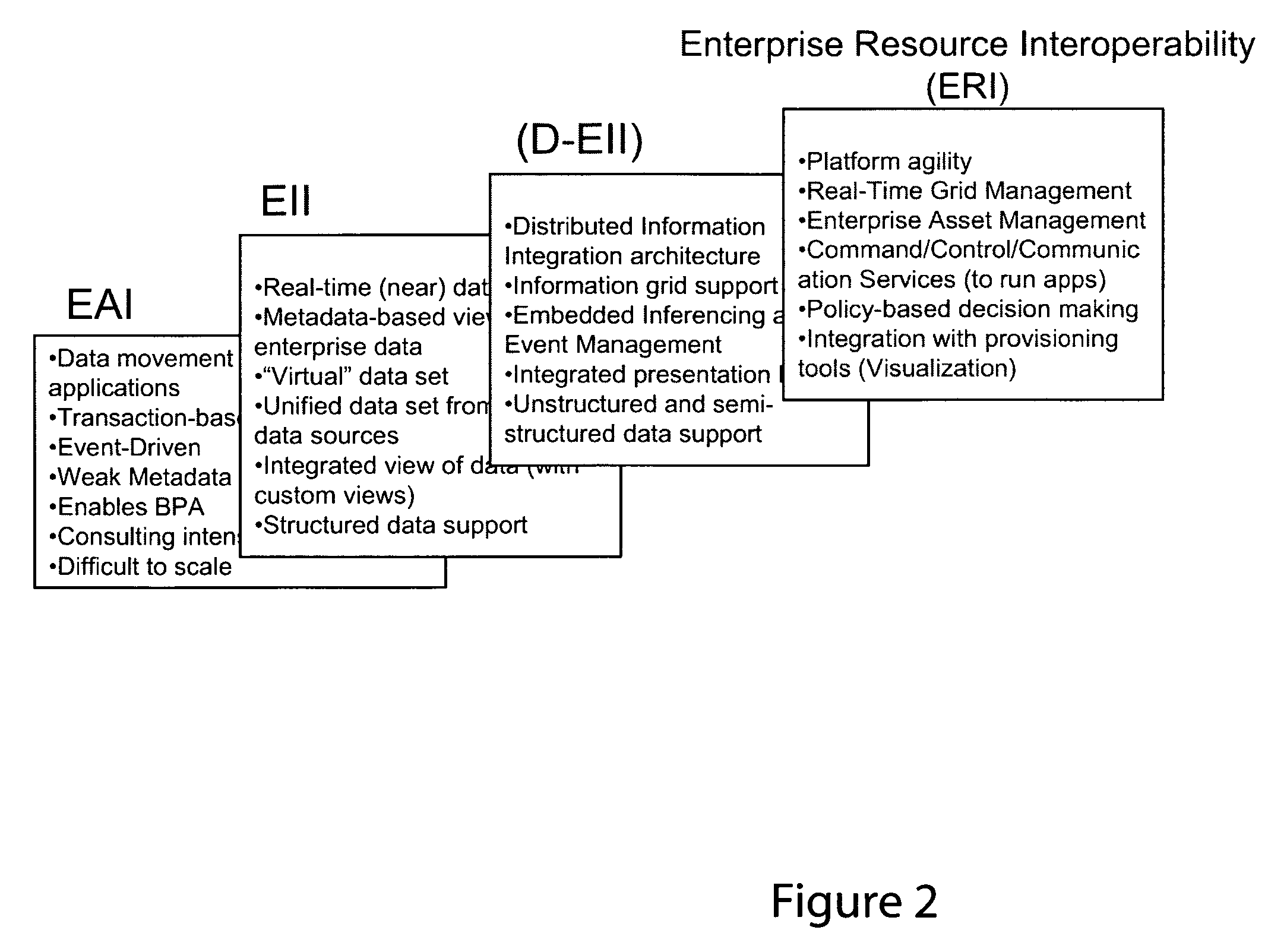Appliance for enterprise information integration and enterprise resource interoperability platform and methods
a technology of enterprise information and interoperability platform, applied in the field of digital data processing, can solve the problems of significant barrier to integrating applications and data, affecting the business, and affecting the efficiency of enterprise resources, and achieve the effect of quick and easy connection
- Summary
- Abstract
- Description
- Claims
- Application Information
AI Technical Summary
Benefits of technology
Problems solved by technology
Method used
Image
Examples
Embodiment Construction
[0124]FIG. 1 depicts advantages of EII and ERI systems according to the invention from a data perspective and an enterprise-wide resource perspective.
[0125]FIG. 2 depicts a relationship between enterprise application integration (EAI), EII, distributed EII (D-EII) and ERI.
[0126]FIG. 3 depicts the components and interrelationships of a grid-based ERI platform according to the invention.
[0127]FIG. 4 depicts a relationship between raw data (e.g., as stored in SQL, DB2 and Oracle databases), knowledge and intelligence (e.g., as supported by a distributed ERI platform according to the invention) and user interaction (e.g., as supported by GUIs of “white matter” applications). The figure also depicts a relationship between information services applications, interoperability services, and the distributed ERI platform according to the invention. Still further, the figure depicts a relationship between enterprise resources, the distributed ERI plat-form according to the invention, ERI applic...
PUM
 Login to View More
Login to View More Abstract
Description
Claims
Application Information
 Login to View More
Login to View More - R&D
- Intellectual Property
- Life Sciences
- Materials
- Tech Scout
- Unparalleled Data Quality
- Higher Quality Content
- 60% Fewer Hallucinations
Browse by: Latest US Patents, China's latest patents, Technical Efficacy Thesaurus, Application Domain, Technology Topic, Popular Technical Reports.
© 2025 PatSnap. All rights reserved.Legal|Privacy policy|Modern Slavery Act Transparency Statement|Sitemap|About US| Contact US: help@patsnap.com



